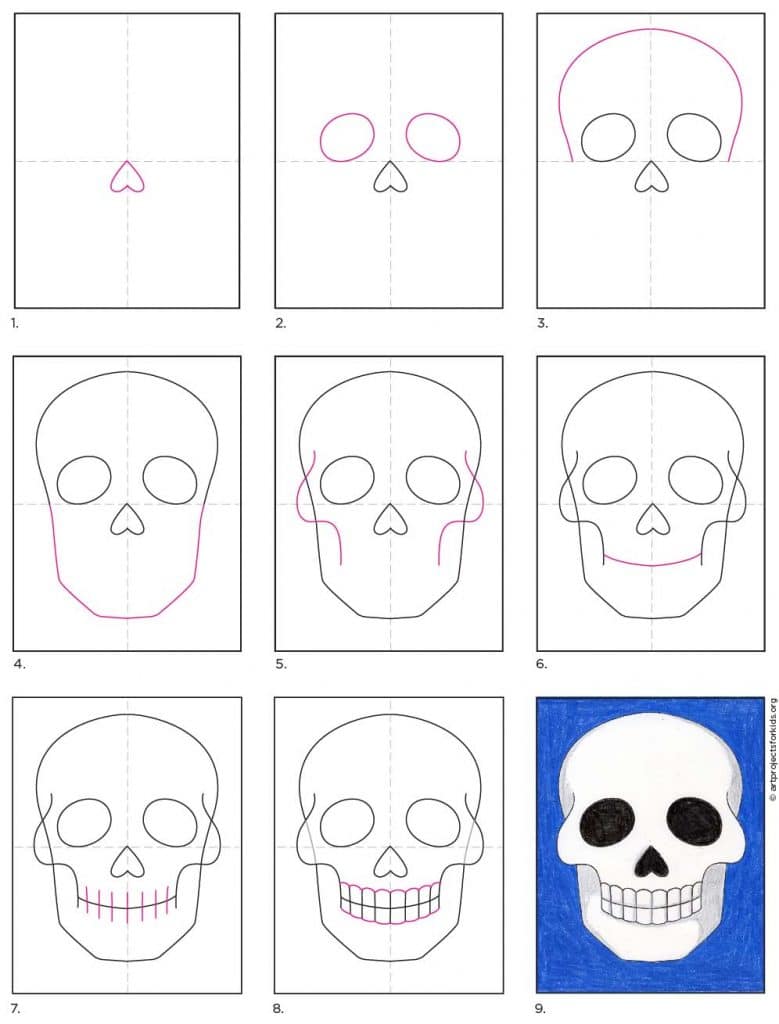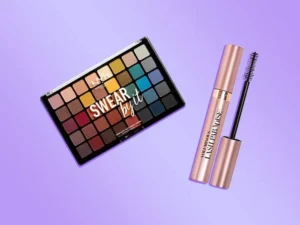
From the eerie depths of history to modern art galleries, the human skull has been a captivating subject for artists across all eras. Its intricate details and symbolic significance make it a compelling element to explore in artistic creations. If you have ever been intrigued by the macabre beauty of skull drawings and wanted to try your hand at creating your own, then this step-by-step guide is just for you. Whether you are a complete novice or an aspiring artist looking to improve your skills, mastering skull drawing techniques can be both challenging and rewarding. Join us on this artistic journey as we delve into the world of skull drawing, unlocking secrets and tips that will help you bring this timeless symbol to life on paper like never before.
Importance of skull drawing for beginners
Understanding the importance of skull drawing for beginners goes beyond just honing artistic skills. Drawing skulls can provide a solid foundation for mastering anatomy and proportions, a crucial aspect for any aspiring artist. By studying the intricate details of a skull, beginners can develop their observational skills and learn how to accurately depict different shapes and forms.
Moreover, sketching skulls allows beginners to delve into cross-hatching techniques, shading methods, and texture rendering, which are fundamental in creating depth and realism in art. This process not only aids in enhancing drawing precision but also fosters creativity as individuals experiment with different styles and interpretations of this iconic symbol. Ultimately, grasping the intricacies of skull drawing sets the stage for more advanced artistic endeavors by instilling discipline, patience, and attention to detail among novice artists.
Understanding Skull Structure:
Understanding the structure of a skull is essential for any artist looking to accurately portray the human form. The skull, comprised of various bones including the cranium and mandible, serves as the foundation for facial features and expressions. Each bone has a specific shape and size, contributing to the overall symmetry and proportion of the head.
One fascinating aspect of skull structure is its adaptability to different ages, genders, and ethnicities. Varying factors such as bone density, shape, and size can significantly influence the appearance of an individual’s skull. By studying these nuances, artists can create more realistic and culturally diverse representations in their drawings.
Moreover, delving into the intricate details of skull anatomy enhances an artist’s understanding of underlying facial muscles and features. This knowledge enables artists to not only draw skulls with precision but also depict expressions and emotions more convincingly in their artwork.
Step-by-Step Drawing Guide:
Intrigued by the intricate details of a skull and eager to learn how to draw one? Let’s dive into this step-by-step guide that will help you master the art of sketching a skull from scratch. Starting with simple shapes like circles and lines, gradually refine your drawing to capture the essence of a skull in all its macabre beauty. Pay close attention to proportions and shading, as these elements can truly bring your drawing to life.
Next, focus on adding depth and dimension by incorporating shadows and highlights into your artwork. This technique not only enhances the realism of your drawing but also adds a sense of drama and intensity. Experiment with different shading techniques such as cross-hatching or stippling to create texture and depth in your skull illustration. Remember, practice makes perfect, so don’t be afraid to make mistakes – embrace them as part of the learning process on your journey towards becoming an accomplished artist.
Adding details like eye sockets and teeth
When adding details like eye sockets to your skull drawing, it’s essential to study the anatomy of the human skull for accuracy. The eye sockets, also known as orbits, are key features that bring realism and depth to your artwork. Pay attention to the shape and size of the orbits in relation to the overall skull structure. Adding shadows around the eye sockets can create a sense of depth and make your drawing more lifelike.
Moving on to teeth, incorporating them into your skull drawing can enhance its realism and add character. Remember that not all teeth are perfectly aligned or uniform in size, so don’t be afraid to vary their shapes and positions. Adding subtle details like cracks or discoloration can give your skull illustration a weathered and aged look. Experiment with different shading techniques to create highlights and shadows that emphasize the three-dimensional form of each tooth.
In conclusion, mastering the art of adding details like eye sockets and teeth can elevate your skull drawings from basic sketches to realistic artworks full of depth and character. By paying close attention to anatomy, proportions, and shading techniques, you can create captivating illustrations that truly stand out. So grab your pencils and brushes, study reference images for inspiration, and let your creativity flow as you bring these intricate features to life on paper.
Shading techniques for depth and realism
Shading is a crucial aspect of bringing depth and realism to your skull drawings. By mastering shading techniques, you can create the illusion of light and shadow, adding dimension to your artwork. One effective technique is cross-hatching, where parallel lines intersect to create darker areas. This method allows you to build up layers of shading gradually, enhancing the three-dimensional quality of your drawing.
Another useful shading technique is stippling, which involves creating tiny dots or points to add texture and variation in tone. Stippling can be especially effective for rendering details on a skull drawing, such as the texture of bone or intricate patterns. Experimenting with different pressures and densities of dots can produce a range of effects, from soft shadows to sharp contrasts. Overall, mastering these shading techniques will elevate your skull drawings to new levels of realism and artistic expression.
Practice exercises to improve skull drawing skills
One effective practice exercise to improve your skull drawing skills is to start with simple shapes. Break down the skull into basic geometric forms like circles, ovals, and triangles. This approach helps you understand the underlying structure of the skull and allows for more accurate proportions in your drawings. Another useful exercise is to practice sketching skulls from different angles. Experiment with side views, front views, and three-quarter angles to develop a better understanding of how the skull looks from various perspectives.
Additionally, studying anatomy can greatly enhance your skull drawing abilities. Take the time to observe anatomical diagrams or even study a real skull if possible. Understanding the placement of features like eye sockets, nasal cavities, and jawline will add depth and realism to your drawings. Remember that practice makes perfect; dedicate consistent time each day to these exercises, and you’ll see significant improvements in your skull drawing skills over time.
Conclusion:
In conclusion, mastering skull drawing techniques is not just about creating realistic or artistic representations of this fascinating subject. It’s also a journey of deepening your understanding of human anatomy, honing your observation skills, and tapping into your creativity in unique ways. By following the step-by-step guide outlined in this article, beginners can unlock a whole new realm of artistic expression and storytelling through their skull drawings.
So, as you continue to practice and refine your skills in drawing skulls, remember that each stroke of the pencil or pen is an opportunity to explore different textures, shading techniques, and perspectives. Embrace the imperfections and mistakes along the way, for they are what will ultimately lead you to discover your own distinctive style. Let the process be as rewarding as the final result itself, allowing yourself to experiment with various mediums and approaches until you find what truly resonates with you in capturing the enigmatic beauty of skulls on paper.





